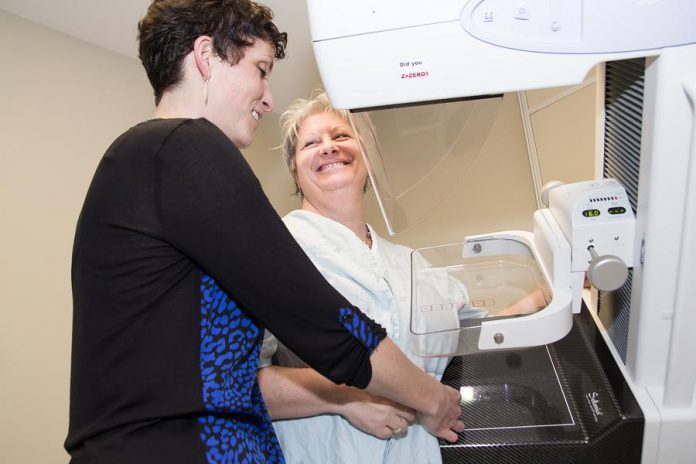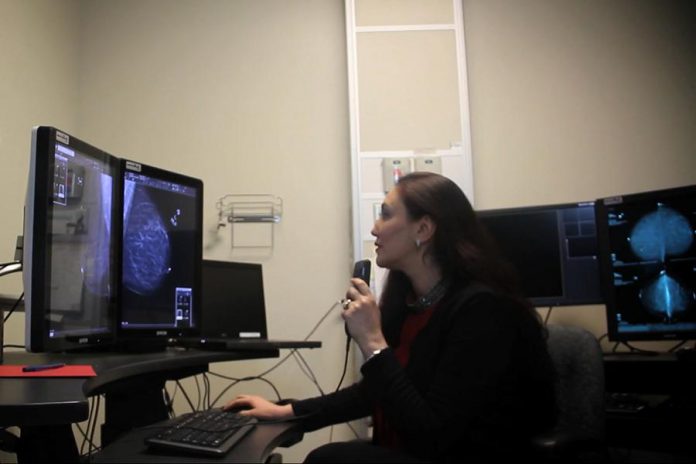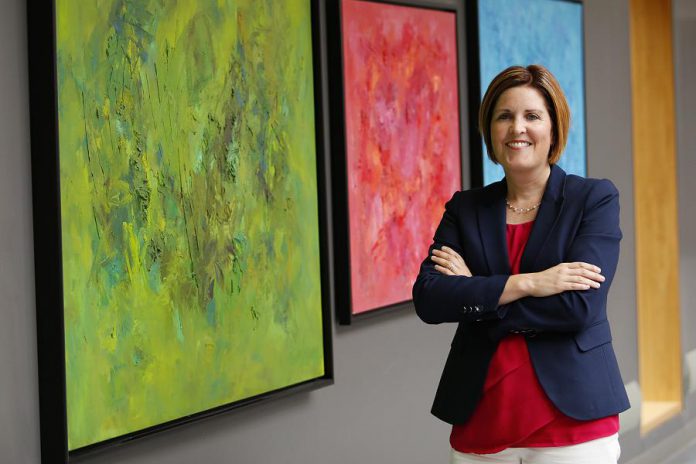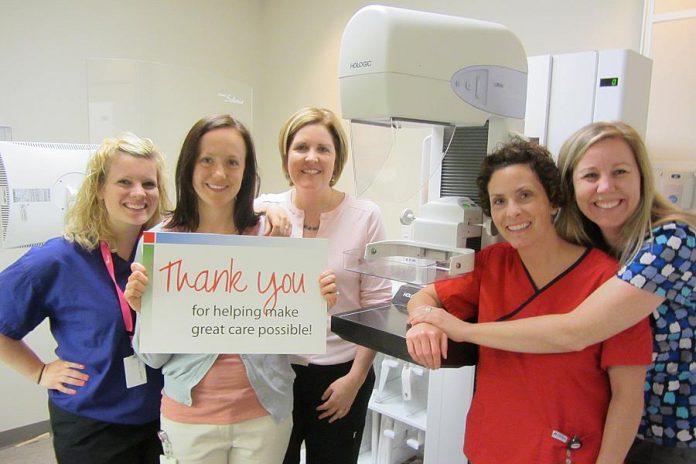
It’s a topic often avoided, but one in nine Canadian women will be diagnosed with breast cancer. Tragically, one in 30 women will die from it.
Studies also show that early detection is critical and regular mammograms can reduce the risk of dying from breast cancer. That’s why the Breast Assessment Centre at Peterborough Regional Health Centre (PRHC) is so important. The centre performs 8,000 mammograms each year using its three mammography machines.
“Many people don’t realize that the government does not typically fund hospital equipment or technology,” says Lesley Heighway, President and CEO of Peterborough Regional Health Centre Foundation. “That’s why the most generous communities have the best hospitals.”
Community donations furnished PRHC’s Breast Assessment Centre with state-of-the art equipment back in 2008 when the new hospital opened. Since then, the centre’s technologists have conducted 64,000 mammograms for residents of Peterborough and surrounding communities, saving lives in the process.

But the equipment at the centre is now eight years old, and the time has come to replace it. Like any technology, says Heighway, medical equipment suffers from wear and tear and eventually needs to be replaced. An additional benefit of replacing medical equipment is that it often provides the opportunity to take advantage of the latest technological advances.
For the Breast Assessment Centre, that means buying three new mammography machines — one over each of the next three years — that have the capability to do three-dimensional imaging, a technology called “tomosynthesis.”
“Tomosynthesis provides clearer images so that doctors can catch anomalies in the breast sooner,” Heighway explains, adding that one of the biggest benefits of tomosynthesis is the reassurance it offers patients.

reviews screening results. The new mammography machines will have the capability to do three-dimensional imaging, a technology called “tomosynthesis.” For more information, watch the video at the end of this story.
With traditional mammograms, patients are often called back because of a shadow on an image that might or might not be cancer. Tomosynthesis helps minimize false positives and reduce the number of call backs, lowering stress and anxiety for both patients and their families.
“This can ensure you have a quicker answer: either I have cancer and my life is going to change, or I don’t and my life is back to normal,” Heighway says. “Those are huge swings of emotion and thought, and impact on family.”
The projected cost of three new mammography machines is almost $1.9 million. The 2015 and 2016 Peterborough’s Dragon Boat Festivals were a great start to the campaign, raising more than $337,000. Since then, community donations have brought the PHRC Foundation two-thirds of the way to its goal (as of May 2017).

“We can only do this with the support of the community,” she says. “Our community transformed the Breast Assessment Centre. We wouldn’t have the technology available that we have today if the community hadn’t stepped up. It funded the mammography machines, much of the ultrasound technology, and even lab equipment used in breast cancer diagnosis.”
Heighway adds that the effort made by the community to build a state-of-the-art facility has extended beyond screening to include breast cancer care as well.
“Through its generous support, the community has helped PRHC offer cancer care services across the spectrum, supporting laboratory, surgical and palliative care investments, and bringing life-saving radiation treatment to our community for the first time,” she says.

While donor investment has already enabled a standard of care at the Breast Assessment Centre on par with the top hospitals across this country, investing in the three new mammography units will ensure this standard of care remains available in the future.
“Breast cancer screening saves lives,” she adds. “This is the next investment our community is being asked to make to keep cancer screening, diagnosis and treatment close to home, particularly for women.”
You can help ensure the Breast Assessment Centre maintains its high standard of care, and continues to save the lives of men and women from across our region, by making a donation to the PRHC Foundation.
To make a gift, call 705-876-5000 or visit http://bit.ly/make-a-gift-to-prhcf.





























